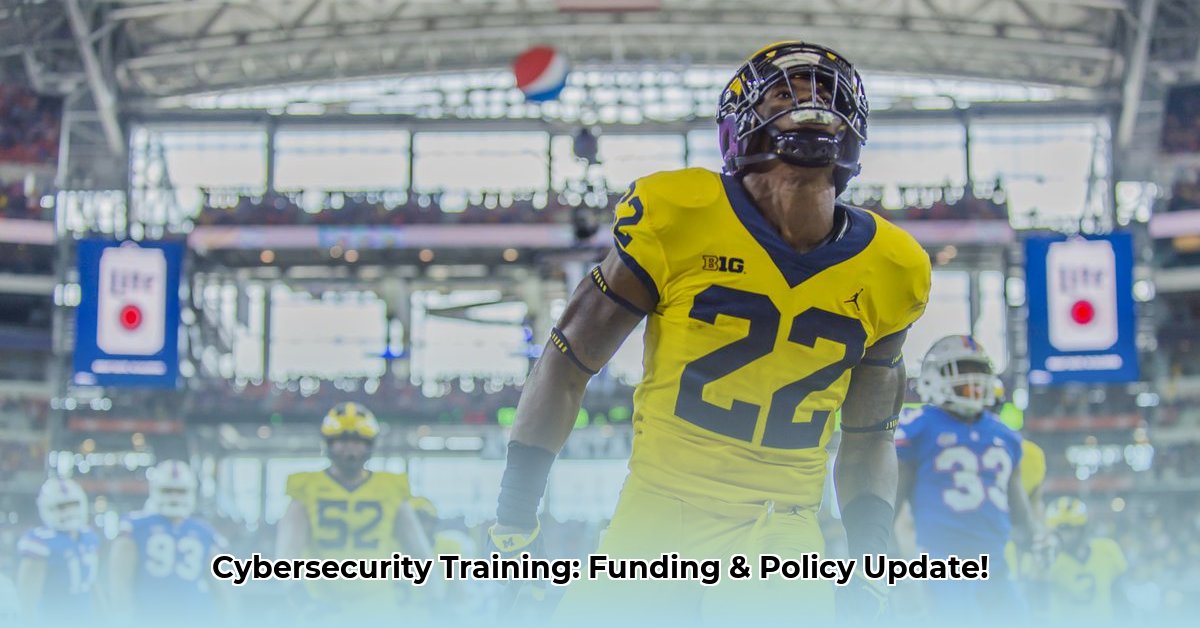
Understanding the Updated DCWF/8140 and its Impact on Cybersecurity Training
The Marine Corps' Cybersecurity Opportunities On-Line (COOL) program has undergone significant changes, primarily impacting how cybersecurity training and certifications are funded. These changes are driven by updates to the Department of Defense Cyber Workforce Framework (DCWF), formerly known as DOD 8140. This guide provides actionable steps for Marines and administrators to navigate these updates effectively. The key changes center around funding eligibility and the certification process itself.
Key Changes & Their Practical Implications
The most impactful change is the shift in funding eligibility. While previously a six-month in-service requirement existed, this restriction has been removed. This opens access to COOL funding for Marines closer to separation, significantly broadening the program's reach. However, the criteria for which certifications qualify for funding have become more stringent. Understanding the updated qualification matrices is paramount. These matrices, readily available through your chain of command, outline the specific certifications eligible for funding under the revised DCWF. They serve as the definitive roadmap for eligibility. Failure to conform to these matrices will result in funding denials.
Navigating the Updated Qualification Matrices
The updated DCWF introduces a more rigorous matching process between job roles and required certifications. This ensures funding is allocated effectively to meet current cybersecurity needs. While initially this may seem complex, it ultimately improves the efficiency of the program by aligning training with mission-critical skills. Consult the updated qualification matrices to determine which cybersecurity certifications align with your MOS and career goals. Your supervisor is the primary point of contact for accessing these matrices and understanding their implications for your situation.
Do you have any concerns about how the updated matrices impact your specific career path? It's essential to address these concerns early in the planning process.
Step-by-Step Guide to Funding Requests
The process for requesting COOL funding has been streamlined but requires careful attention to detail. Failure to adhere to these steps increases the likelihood of delays or denial of your request.
Step 1: Needs Assessment & Certification Selection: Identify cybersecurity certifications that align with your career goals and meet the updated DCWF/8140 requirements. This initial stage is crucial for a successful funding application. Review the updated qualification matrices (obtained from your supervisor) to identify eligible certifications.
Step 2: Eligibility Verification: Confirm the eligibility of your chosen certifications based on the updated DCWF. This involves cross-referencing your chosen training with the mandated criteria, ensuring alignment between your needs and the program's parameters.
Step 3: Comprehensive Request Preparation: Gather all necessary documentation, including your training plan, supporting evidence for your needs, and any other required forms. Thoroughly review each element of your request before submission to prevent errors.
Step 4: Formal Submission: Submit your funding request through the established channels within the updated COOL system. This often involves internal processes within your unit and adherence to specific command deadlines.
Step 5: Ongoing Monitoring: After submitting your request, actively monitor its status and follow up with relevant personnel to ensure timely processing. Proactive monitoring minimizes delays and enhances the likelihood of approval.
Mastering the New Credentialing Process: Addressing Common Challenges
The updated credentialing process introduces some new complexities including changes in certification names and terminology. The following FAQs address potential stumbling blocks.
Frequently Asked Questions (FAQs):
- Q: My desired certification isn't listed. What are my options? A: Explore alternative certifications that satisfy the updated DCWF requirements. Consulting with your supervisor is extremely beneficial in identifying suitable alternatives.
- Q: Where can I find the updated DCWF/8140 matrices? A: Contact your supervisor or unit administrator. This information is readily accessible through internal Marine Corps channels.
- Q: My funding request was denied. What should I do? A: Thoroughly review the denial reasons. Reconsider your request, potentially making adjustments based on the feedback. An appeal of the decision is possible if justifiable reasons exist.
Resources and Contact Information
For additional support, contact:
- Your Chain of Command: Your immediate supervisor and unit administrators are your primary resources for guidance and support.
- Marine Corps COOL Program Office: [Insert Official Website Link Here]
Risk Mitigation Strategies
Proactive planning is vital for mitigating potential risks associated with the updated COOL program. The following table outlines key risks and associated mitigation strategies.
| Risk Factor | Mitigation Strategy |
|---|---|
| Changes in DCWF/8140 Matrices | Thoroughly review the updated matrices prior to submitting any requests. Consult your supervisor if any ambiguities exist. |
| Funding Request Delays | Submit requests well before deadlines. Maintain clear and consistent communication with the COOL office and your chain of command. |
| Limited Testing Availability | Plan ahead and schedule exams early to avoid potential delays. Identify alternative testing locations or scheduling options as needed. |
| Lack of Awareness of Changes | Stay informed through official communication channels (e.g., unit briefings, online resources). Active participation in relevant training sessions is essential. |
Conclusion: Proactive Planning for Success
The updated Marine Corps COOL program necessitates a proactive approach. By understanding the changes, following the steps outlined in this guide, and utilizing available resources, Marines can successfully navigate the new system and obtain the cybersecurity certifications necessary for career advancement. Remember, your chain of command is there to assist you throughout this process. Proactive engagement with your leadership is key to successfully obtaining the training and funding you need.
⭐⭐⭐⭐☆ (4.8)
Download via Link 1
Download via Link 2
Last updated: Friday, May 09, 2025